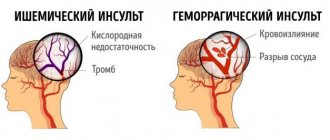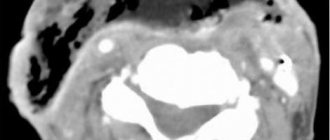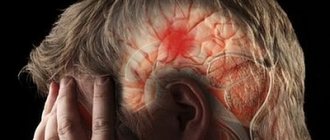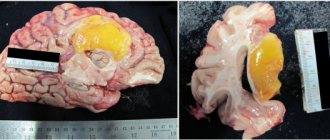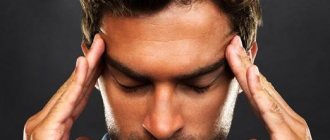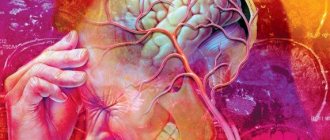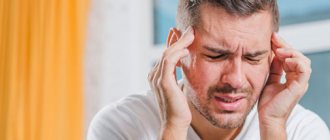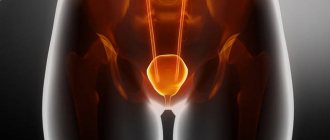Stroke: clinic and treatment
Treatment of acute stroke will be more successful if you consult a doctor in a timely manner. If you or a loved one:
- concerns about dizziness, nausea, weakness or numbness in the limbs;
- there were difficulties in swallowing, speech functions were impaired;
- drowsiness, inability to adequately respond to what is happening around;
- inability to maintain a stable position, impaired consciousness.
In this case, a hemorrhagic or ischemic stroke of the brain can be suspected in time, the treatment of which should be carried out only in a hospital setting.
Symptoms of ischemic and hemorrhagic stroke
The first signs of hemorrhagic stroke and cerebral infarction differ in men and women. Ischemic stroke (cerebral infarction) in most cases develops within a few seconds or minutes, much less often over hours or days. It is manifested by motor, sensory, speech and other focal neurological disorders that are characteristic of damage to one of the vascular areas of the brain. With a stroke located in the brain stem, cerebellum, or the presence of extensive infarctions in the cerebral hemisphere, confusion, vomiting and intense headache are observed.
The first symptoms of a hemorrhagic cerebral stroke are as follows:
- headache;
- dizziness, impaired consciousness;
- vomit;
- convulsions.
With hemorrhage in the brain, focal symptoms predominate:
- meningeal, bulbar, pyramidal symptoms;
- extrapyramidal dysfunction;
- sensitivity disorders;
- cranial nerve palsy;
- speech disorders.
In patients with hemorrhagic stroke, general cerebral symptoms initially predominate, and then focal symptoms appear.
Effective treatment of stroke: innovative technologies to protect your health
Therefore, the global medical community has developed not only a program whose goal is to prevent stroke, treating the consequences and restoring the body takes a large part in their research. Our specialists take an active part in scientific research and have created their own effective program that literally gets patients back on their feet. Modern treatment makes it possible to restore the functionality of the limbs, relieve dizziness and dysfunction of the speaking apparatus. Of course, once a stroke is diagnosed, hospital treatment becomes mandatory.
We are able to bring an atmosphere of home comfort into a hospital environment and provide psychological comfort to the patient. The stroke treatment center ensures that the patient will be provided with everything necessary, including equipment for rehabilitation and examination, the involvement of outside specialists and studies will not be needed anywhere else.
Stroke treatment is carried out in Moscow; convenient transportation simplifies contact between relatives and patients, and gives them the opportunity to visit the patient as much as possible and necessary.
Stroke treatment: what do we offer?
In order to completely eliminate a cerebral stroke, treatment must be carried out under the supervision of highly professional doctors. Specialization of our doctors:
- Ischemic stroke of the brain, the treatment of which is quite successful even in very complex cases when one side of the body is paralyzed.
- Hemorrhagic stroke is a disease whose course is not accompanied by paralysis, but nevertheless requires an immediate response from doctors. The slightest delay or lack of professionalism can lead to disability, so do not experiment - call us immediately.
Upon entering our clinic, the patient immediately undergoes simple and perfusion computed tomography, as well as tomography of the neck vessels. The drug treatment for stroke depends on the results of the examination. Also, if necessary, invasive diagnostic angiography is performed, which will determine the location and size of the blood clot. Also, during the procedure, the blocked artery can be cleared mechanically.
In each specific case, depending on what kind of stroke is diagnosed, the cost of treatment may vary. The recovery plan is developed individually.
If a cerebral stroke is diagnosed, treatment may include:
- Drug therapy that will expand the lumen in the vessel and allow blood to flow freely.
- Surgery, including anatomical bypass, arotid endarterectomy of cerebral vessels, or installation of stent grafts in the carotid artery.
- Physiotherapy and rehabilitation treatment after a stroke will allow you to gain the opportunity to lead a full life. Exercise therapy specialists work with each patient according to an individually developed program for getting rid of the consequences of a stroke, which makes treatment even faster and more effective.
We cannot always predict the development of the situation, but we can say one thing for sure - stroke treatment in the hospital is carried out by doctors who make every effort to achieve a high result. We work to ensure that you live a full life.
Evaluation of stroke patients
In the presence of the first symptoms and signs of a stroke or mini-stroke in men and women, neurologists at the Yusupov Hospital conduct a comprehensive examination of the patient. Neurologists use both standard CT and magnetic resonance imaging, but perform a CT scan first as a quicker test to rule out bleeding in the brain. After performing magnetic resonance imaging at the Yusupov Hospital, the results of both studies are assessed by a doctor who has extensive experience in diagnosing cerebrovascular accidents in the acute stage.
Diffusion-weighted MRI allows doctors at the Yusupov Hospital Neurology Clinic to identify focal cerebral ischemia at the very beginning of development, the size and time of stroke. During the examination, the doctor may see small lesions, including those located in the cerebellum and brain stem, which are difficult to detect on standard CT scans of the brain. Perfusion-weighted MRI allows neurologists at the Yusupov Hospital to assess the movement of blood through the vessels of the brain and the volume of ischemia in the presence of the first signs of stroke in men and women.
- angiography;
- multislice tomography;
- magnetic resonance angiography;
- duplex scanning of the vertebral and carotid arteries (at the first symptoms of a spinal cord stroke);
- transcranial Dopplerography of cerebral arteries.
For men and women with the first signs of stroke, doctors at the Yusupov Hospital register an electrocardiogram, which allows them to identify rhythm disturbances, ischemia and other changes in the myocardium. If valvular heart disease, cardiomyopathy, ventricular aneurysm, or intracardiac thrombus is suspected, transthoracic electrocardiography is performed.
Minimally invasive surgery: gentle treatment after ischemic stroke
One of the most common ways to neutralize the consequences of a stroke is treatment using a technology such as thrombolysis. During an angiogram, a drug is injected directly into the area where the blood clot has formed. The blockage disappears and blood circulation is restored.
Additionally, drugs are introduced that improve metabolic processes in the brain, so that after a stroke, treatment is faster and more effective. Delay is unacceptable; a diagnosis such as stroke can be treated in a hospital well with a timely response from doctors, when the brain has not yet received irreversible damage.
Differentiated treatment of ischemic stroke
The specific (differentiated) treatment of ischemic stroke is based on reperfusion therapy aimed at restoring the lumen of the vascular bed. Among the methods of treating ischemic stroke, thrombolytic therapy is a method whose effectiveness has been proven by the results of large multicenter studies. The first study, conducted by the National Institute of Nerve Diseases and Stroke in 1995, showed that intravenous rt-PA administered within 3 hours of the onset of ischemic stroke significantly improved outcome. Also in 1995, the results of the European Study of Acute Ischemic Stroke (ECASS-1) were published, which studied the effectiveness of rt-PA prescribed within 6 hours of the onset of stroke at a dose of 1.1 mg/kg. Along with clinical improvement, some patients had a high risk of intracerebral hemorrhage. Three years later, results emerged from the ECASS-2 study, which was performed with rt-PA at a dose of 0.9 mg/kg within a 6-hour “therapeutic window.” Good recovery was observed in 54.3% treated with rt-PA, compared with 46% treated with placebo. Another large study assessed the effectiveness of rt-PA when administered within 3 to 5 hours of the onset of stroke symptoms. The results of this study, like ECASS-2, showed that the incidence of intracerebral hemorrhage was slightly higher when rt-PA was administered within 6 hours than within 3 hours.
A study of the possibility of thrombolysis within 0 to 6 hours using recombinant prourokinase, which was injected locally into the vessel for angiographically confirmed thrombosis of the middle cerebral artery, showed that thrombolytic therapy can be effective up to 6 hours from the onset of stroke, provided that patients are carefully selected. It was proposed to take measures to expand the “therapeutic window” when conducting thrombolysis in patients with acute ischemic stroke. These and other studies have made it possible to develop recommendations for thrombolytic therapy in patients with acute ischemic stroke.
The indication for its implementation is acute ischemic stroke lasting 3 hours from the onset of the disease in patients under 80 years of age. Before starting this treatment, a CT scan of the brain should be performed to rule out hemorrhagic stroke. Thrombolysis is not recommended for patients with severe stroke, large infarcts, blood pressure > 185/110 mmHg, or if the stroke occurred during sleep. Because thrombolytic agents increase the risk of bleeding, the effectiveness and safety of their use should be discussed with the patient and his family before initiating therapy.
Tissue plasminogen activator is currently recognized as the main cerebral thrombolytic. Intravenous administration of plasminogen activator (rt-PA) at a dose of 0.9 mg/kg (10% of the dose administered as a bolus, then slowly over 60 minutes) is indicated in the first 3 hours from the onset of stroke. In selected patients, rt-PA may be administered between 3 and 6 hours. Intravenous administration of streptokinase is not recommended, as there is a high likelihood of bleeding. In patients with acute basilar occlusion and occlusion of the proximal middle cerebral artery, intra-arterial administration is possible in specialized centers.
Physiotherapy: stroke treatment, inpatient rehabilitation
How else can modern medicine help? Stroke treatment and rehabilitation must be comprehensive, including physical therapy. Stimulation of the nervous system will help restore brain cells and restore lost functions to a person.
Once a left-sided stroke is diagnosed, treatment may include:
- massage;
- classes with a neuropsychologist and psychotherapist;
- physical exercise.
Not everything, of course, depends on the doctors - recovery will be faster if the patient himself makes every effort and does not give up. For our part, we will make every effort to create a favorable atmosphere.
The page is for informational purposes only. Find out the exact list of services provided and the specifics of the procedures by calling.
How to beat a stroke
How to beat a stroke
Neurologist Maria Evgenievna Sergienko spoke about how to recognize a stroke in the early stages, who is at risk, and whether it is possible to protect yourself from this terrible disease.
— Today, stroke is one of the most common cardiovascular diseases. Six million strokes occur annually throughout the world, of which 450 thousand occur in Russia. Thus, every minute and a half one of the inhabitants of our country has a seizure. The numbers are very large.
At the same time, stroke is one of the main causes of premature mortality, ranking second on the World Health Organization list after coronary heart disease and ahead of cancer.
Every fifth person who has suffered an attack develops a repeated acute cerebrovascular accident within a year, in which the likelihood of death increases. That's why World Stroke Day, which falls on October 29 this year, is celebrated to raise awareness about the prevention and treatment of this disease.
About the main causes of stroke and whether it is possible to control them.
— Age is one of the uncontrollable risk factors. It is known that the risk of cardiovascular disease increases with age. It should be noted that today stroke is “getting younger,” that is, the age range is shifting significantly and includes people of young working age and even children. At a young age, hemorrhagic strokes (hemorrhages) are more common due to diseases of the blood and blood vessels (rupture of a vascular aneurysm).
But 80% of all strokes are ischemic, that is, associated with an acute blockage or narrowing of a vessel.
Let's look at the main causes of stroke. These are arterial hypertension, high cholesterol, sedentary lifestyle, smoking, overweight, diabetes, metabolic syndrome.
Arterial hypertension is an increase in blood pressure above a certain level, at which the risk of cardiovascular disease increases. This is a numerical criterion that is established based on research data, and today these figures are 135/85 mm. rt. Art. It should be remembered that a person is able to tolerate painless fluctuations in blood pressure within a fairly wide range for a long time. However, it is during this asymptomatic period that changes occur in the vascular wall, its damage and lipid deposition, which become irreversible over time, and it is necessary to treat arterial hypertension during this period. With timely treatment of arterial hypertension, this process can be stopped.
The higher the level of cholesterol, especially low-density cholesterol, the higher the risk of cardiovascular accidents. This is data from numerous studies. If we reduce its level, we thereby reduce the risk of stroke.
We get only 10% of cholesterol from food, most of it is synthesized in the liver. The higher the degree of obesity and the caloric content of food, the more cholesterol is produced.
Therefore, reducing the caloric content of food and increasing physical activity reduces the synthesis of cholesterol by liver cells. There is a period of irreversibility in the formation of atherosclerotic plaques in blood vessels. That is, even if a person changes his lifestyle during this period, stops smoking, and reduces body weight, the process, if it has already started, may be irreversible. Therefore, if plaques are not yet in the vessels, then lifestyle modification can significantly delay the period of prescribing statin drug therapy.
Insufficient physical activity is a significant risk factor. What should it be like? The answer is obvious - aerobic. That is, walking, running, swimming and other physical activities. Endurance loads, exercise machines, and strength training are not suitable here. How much do you need to walk per day? Ten thousand steps a day is considered sufficient physical activity. The type of activity depends on the condition of the body and age. A sedentary lifestyle leads to excess body weight.
Is it possible to assess excess body weight?
There are two indicators: body mass index (BMI) It is calculated using the formula: weight in kg divided by height in m2. Normally, BMI varies between 20−25. Numbers from 25 to 30 are already overweight, more than 30 are obese. However, if a person has developed muscle mass, BMI will also be high, so this indicator is assessed according to the following indicator: waist circumference in cm - evaluates abdominal obesity. For men the norm is no more than 100, for women no more than 80 cm.
What is metabolic syndrome?
This is a metabolic disorder. How to assume that you have it? This is a combination of one main indicator and any two additional ones. The main one is excess body weight: waist circumference and BMI. Additional - arterial hypertension, increased levels of low-density lipids, triglycerides, increased fasting glucose levels, identified type 2 diabetes mellitus.
If you find all the criteria, then you need to consult a doctor: a therapist, a cardiologist, an endocrinologist, who will tell you how to monitor and treat this condition and conduct additional examination.
What to do to prevent stroke?
First of all, it is necessary to increase the level of physical activity and reduce body weight.
What symptoms will help us suspect the development of a stroke?
Impaired movements in the arm and/or leg, impaired sensitivity, speech, visual impairment, coordination, severe headache, vomiting, impaired consciousness.
It should be remembered that a stroke can manifest itself in a wide variety of symptoms, and this depends on the location of the brain lesion. The main thing to remember is that their rapid or acute development, or their appearance in the morning when a person wakes up, plays an important role. It is important to promptly consult a doctor or call an ambulance service, because time allows you to maintain healthy brain activity. Share
